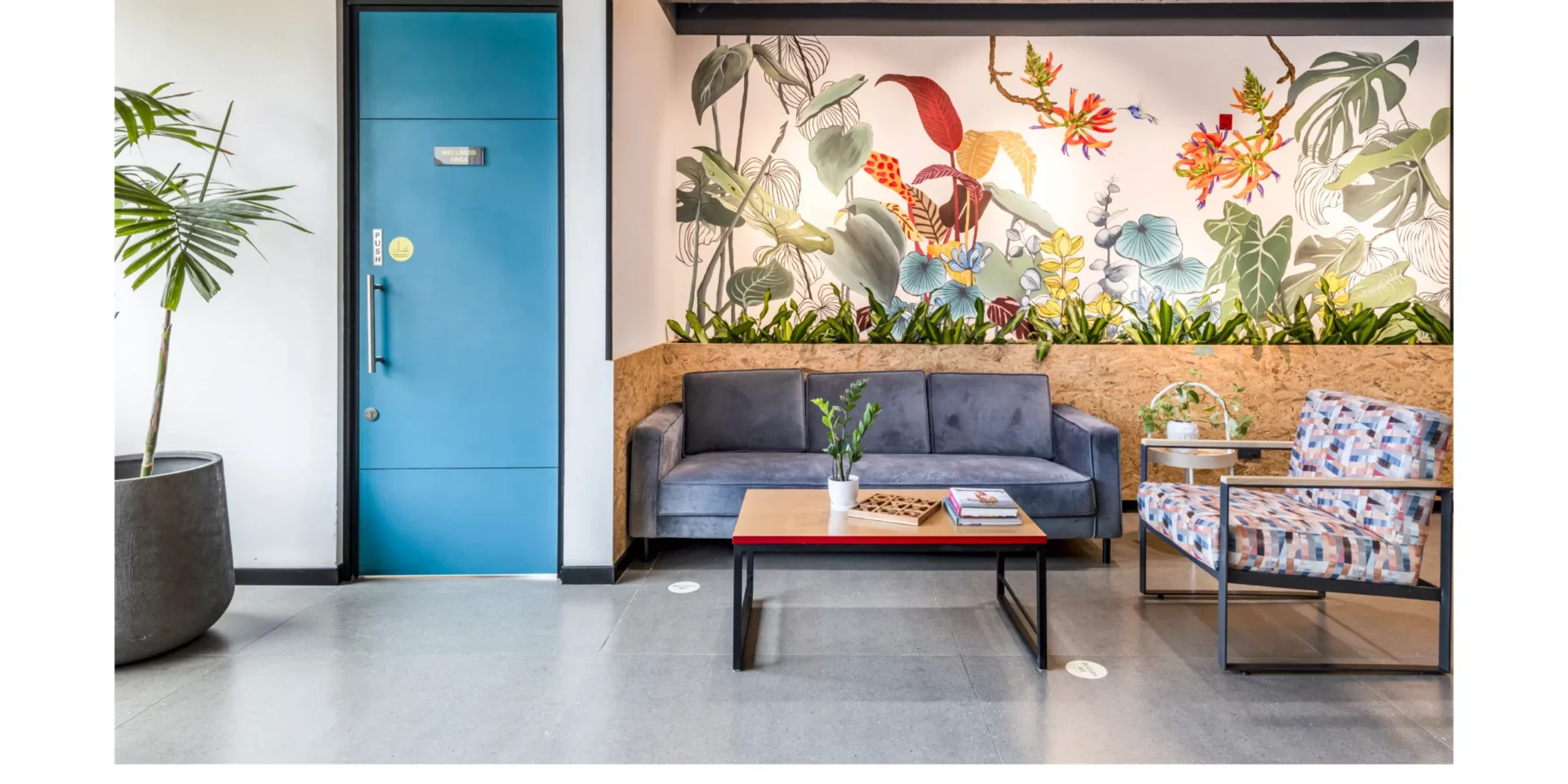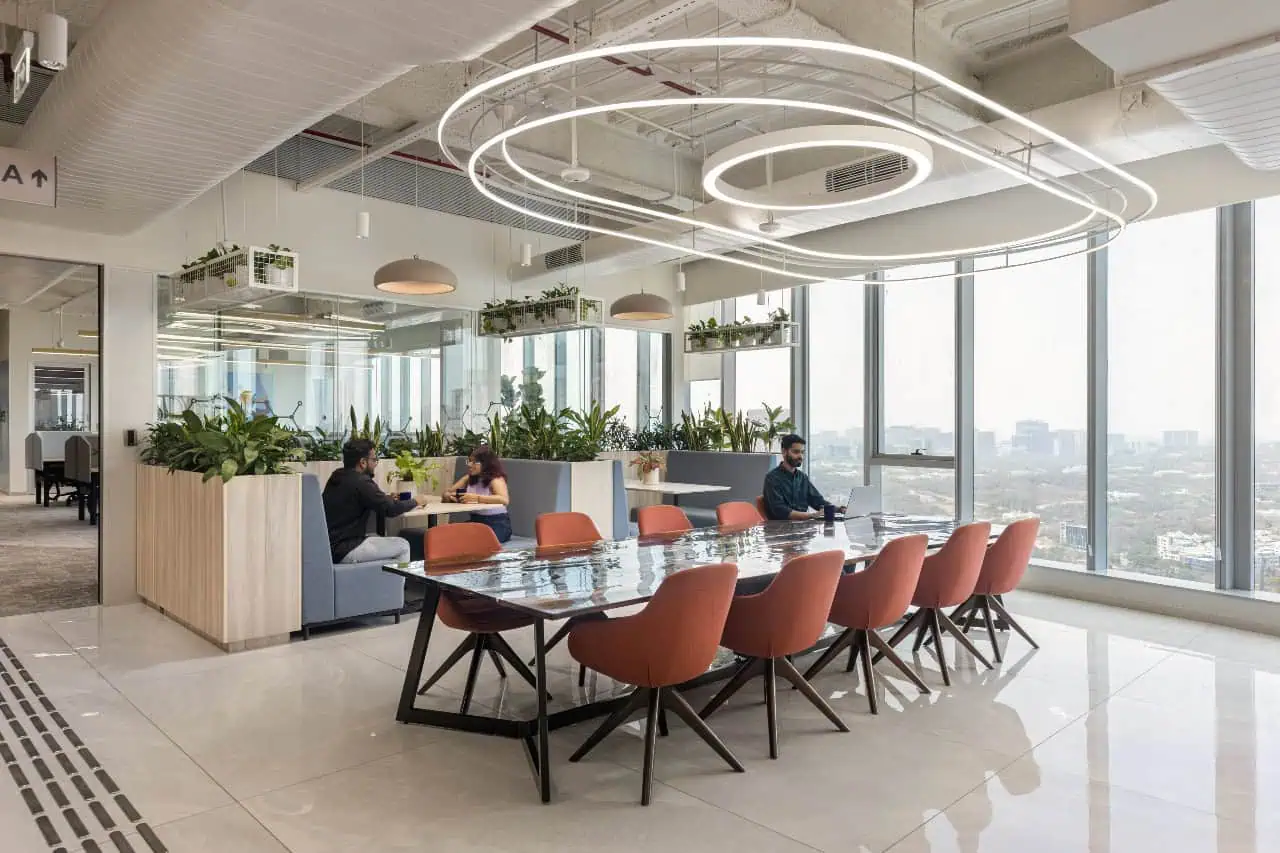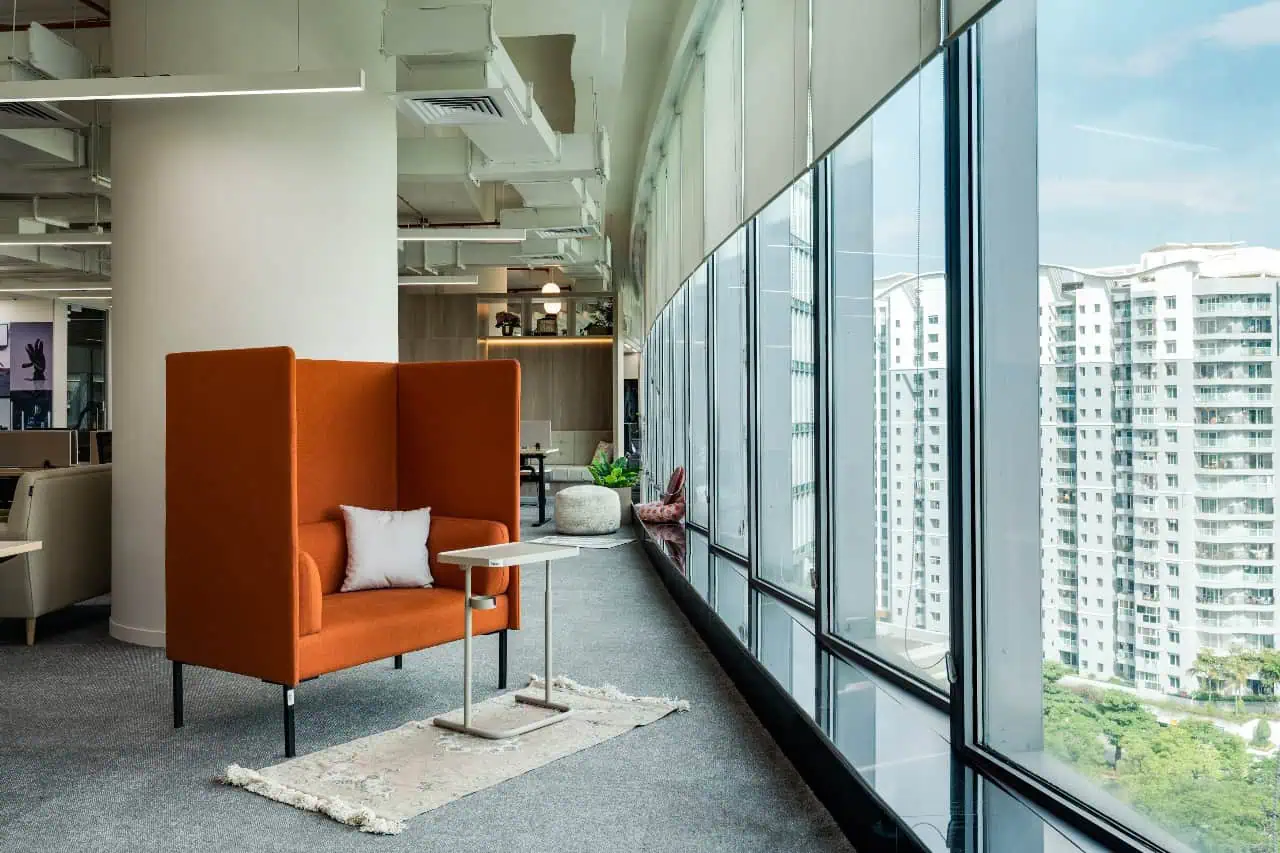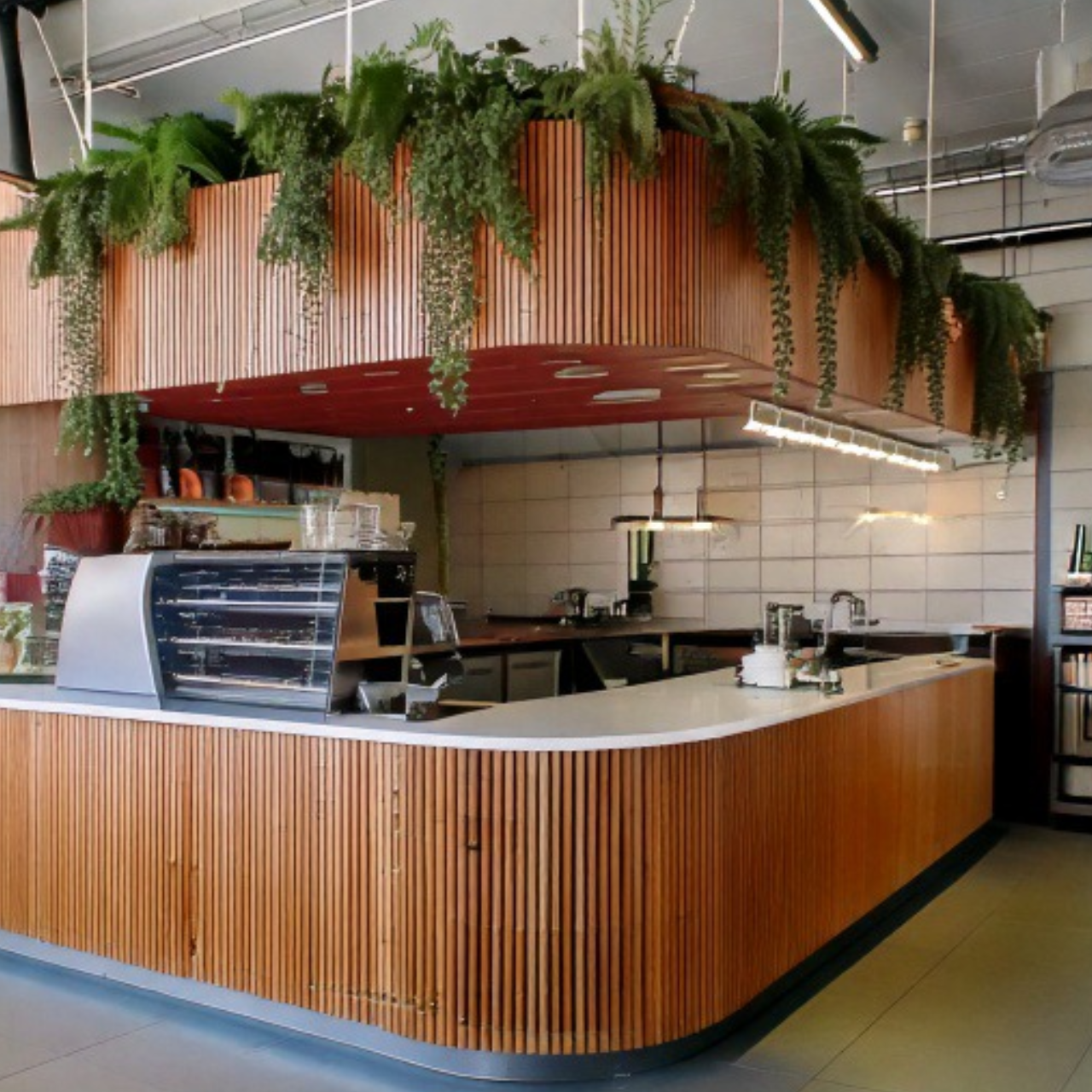How Can Multi-Sensorial Workplace Design Foster Organizational Success?
Humans experience a space through each of their five senses. Take, for example, a visit to the beach. If you were to recollect that memory, you would not just think about the visuals but also about the feeling of sand and breeze against your skin, the taste of salt in the air, the smell of tangy humidity, and the sound of waves hitting the shore. Conclusively, we also perceive offices as a sum total of our sensory simulations; never in isolation. And, here’s proof:
- A 2019 Dell study revealed that 73% of UK office workers would consider leaving their job if the workplace environment didn’t inspire them.
- An article on Pinterest’s Dublin office by Business Insider highlighted a 55% increase in employee attendance as the newly designed workplace was designed to mirror local culture; thus enhancing spatial belongingness and engagement.
- Zippo’s 2024 workplace design statistics mentioned 68% of employees reported feeling disengaged at work due to poor office design.
Importance of Multi-Sensorial Workplace Experience
Imagine walking into a workspace with harsh lighting, uncomfortable furniture, constant noise, and stale air. How does that make you feel? Unhappy, right? Workplaces that fail to engage all the five senses are often uninspiring, uncomfortable, and detrimental to productivity. Traditional office layouts prioritize efficiency over experience and tend to neglect employee needs. On the contrary, a well-designed workspace incorporates elements that stimulate sight, sound, touch, smell, and taste; thus fostering a dynamic and engaging environment. This in turn, enhances well-being, creativity, and overall job satisfaction.
– Employees working in environments with proximity to nature have shown a 15% boost in creativity levels. (Lindenwood University)
– Work environments that engage multiple senses can result in a 30% rise in employee engagement levels. (HR cloud)
How to Design Workplaces for a Holistic Multi-Sensorial Experience?
Workplaces are a think tank for innovation. Companies that invest in curating a multi-sensory workplace design can enhance cognitive function, reduce stress, and improve employee output. Let’s take a deeper dive into how organizations can embrace this approach to design.
1. Sight
For humans, eyes are the most impactful sensory organ. What meets the eye is usually the most memorable event or act. Therefore, a visually inviting workspace is not just a choice, it’s a necessity in today’s evolving corporate landscape. In doing so, elements like fenestration, lighting, colours, furniture, and interactive display boards play a crucial role. Further, natural light and having the views of nature is proven to enhance mood, focus, and energy levels. Plus, incorporating larger windows, skylights, and open spaces can help employees feel more connected to the outside world.
Further, colours have a psychological and emotional impact on user experience. Cool tones like blue and green promote concentration, while warm hues such as yellow and orange encourage creativity and communication. Additionally, installing smart screens, affirmations, digital art, and interactive workstations can add a sense of dynamism to the workplace. Such technologies also allow for customization, branding, and engagement, thereby improving the recall value of the company. Also, incorporating signages as an element of wayfinding can further enhance the quality of the workspace. Lastly, the sight of greens and other natural elements are proven to be a stress buster. Introducing potted plants, green walls, and creepers can contribute to a healthier workspace with improved air quality and regulated indoor temperatures.
2. Hearing
With the growth of hybrid work culture, physical barriers in the workplace have reduced. We are now venturing into the age of co-working with adaptable spaces becoming the new norm. However, a major downside of this evolution is the lack of focus spaces for heads-down productivity. But, this can be addressed by creating sound insulated pockets of work using acoustic wall and ceiling panels, workpods, and quiet zones. This provides employees the choice to select their micro work environment and concentrate better.
For public spaces like lobbies and corridors or rejuvenation areas like indoor games and spas, playing ambient music helps enhance mood and energy. The sounds of nature like flowing water, birdsong, or rustling leaves promote relaxation and improve attentiveness.
Beyond physical interventions, workplaces can also benefit from mindful soundscaping that enhance focus and well-being. Using acoustic mapping, organizations can identify noise hotspots and optimize sound distribution to ensure that collaborative areas remain vibrant while workstations retain a sense of calm.
Sound expert Fran Board from Moodsonic explains, “By curating soundscapes to align with different needs, designers can support a broader range of sensory preferences and working styles. Offering users choice and control over their environment is beneficial to this approach as it allows people to select spaces that best meet their needs at any given moment.”
She adds “One example is the distinction between silence and quiet. Silence can feel unnatural or even uncomfortable, while quiet shaped by gentle soundscapes can be calming and restorative. There’s often a big difference between the two.”
3. Touch
Tactility is a key element of how we understand a space. This is where materials play a crucial role in bringing character to the office. Incorporating diverse textures like wood, fabric, stone, and ceramics add depth and dimension to the workspace. Comfortable and ergonomic furniture also becomes an integral part of this process. Cushioned chairs with upholstery prevent strain during longer hours of sitting.
Also, a rarely known fact is that our sense of touch is impacted by the level of humidity in a space. Therefore, it is vital to maintain optimal temperatures and humidity levels using smart climate control systems, ventilation, and air purifiers. Offices that overlook this element, tend to develop a sick building syndrome wherein people feel discomfort due to bad indoor air quality or other building environment factors.
4. Smell
Scent has a profound impact on physical and emotional wellbeing of people. Introducing subtle aromatherapy through diffusers or scented plants can enhance focus and reduce stress in the workplace. For example, citrus fragrances boost alertness, while lavender and chamomile promote relaxation. Additionally, there is a growing trend for coffee bars in the reception lobby. This helps in making the place feel more inviting and comforting. Further, ensuring proper ventilation, air purification, and odor-neutralizing solutions can prevent distraction or unpleasant smells. A clean and fresh-smelling office elevates comfort and livability of the work environment.
5. Taste
While nutrition is not an obvious part of spatial design, appetite-building using design elements can be intentional. Providing communal spaces like canteens, cafeterias, or break out spaces can foster social interaction and strengthen employee relationships. These areas can have a vibrant colour scheme with gastronomical wall art and decor pieces to instill healthy eating habits that improve productivity. To abate the post-lunch sleep, incorporating spill over areas with aesthetically pleasing furniture and natural elements can serve as a holistic restorative space. Further, planning for a spacious pantry with designated storage spaces for fruits, snacks, and water can encourage mindful eating habits through design.
In Conclusion
“Our senses are deeply intertwined,” says Fran, “By designing for the senses, we can create richer, more diverse experiences and use the science of sensory design to fine-tune for employee well-being and productivity.”
Organizational leadership can foster a culture of awareness by training managers to recognize and accommodate diverse sensory needs and ensure inclusivity. Also, encouraging movement through activity-based working, walking meetings, or ergonomic interventions can foster ease of movement. Additionally, feedback-driven workplace evolution, where employee input shapes sensory enhancements can guide continuous improvement and contribute to the company’s growth.
Explore our research insights and articles to create workplaces that truly stimulate success!
Related Reads:
Multifunctional Office Design for Maximizing Workspace Utility
Why Employee Experience is Linked to Organizational Success
Pragya Sharma, is a talented architectural writer and an invaluable content collaborator at Zyeta. She expresses her thoughts and ideas effectively across various mediums like blogs, social media, web content, and workshops. By joining forces with Zyeta, she creates compelling narratives that amplify the evolving importance of design in today's world.






